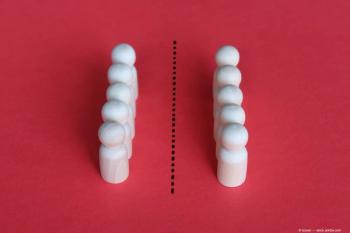
Eyes with intraoperative floppy iris syndrome are often treated with multimodal strategies
Surgeons discuss their preferences and techniques for using various ophthalmic viscosurgical devices in eyes with intraoperative floppy iris syndrome.
Key Points
Various techniques have been described for enabling safe cataract surgery in eyes with intraoperative floppy iris syndrome (IFIS), and multimodal strategies often are used for each case. In this article, surgeons discuss why they choose a viscoelastic system (DuoVisc, which is 1% sodium hyaluronate [ProVisc] and 4% sodium chondroitin sulfate/3% sodium hyaluronate [Viscoat], Alcon Laboratories) or 4% sodium chondroitin sulfate/1.65% sodium hyaluronate (DisCoVisc, Alcon Laboratories) as their ophthalmic viscosurgical device (OVD) and the benefits of microcoaxial surgery using a proprietary torsional handpiece and phacoemulsification system (OZil and Infiniti, Alcon Laboratories) for achieving a successful outcome.
Samuel Masket, MD, and Bret Fisher, MD, said they find that combining a pharmacologic approach to achieve and maintain pupil dilation with the use of 4% sodium chondroitin sulfate/1.65% sodium hyaluronate as their OVD during lens removal and 2.2-mm coaxial microincisional phaco with the proprietary handpiece and platform allows most IFIS cases to be completed without the need for placing a mechanical device to stabilize the iris.
Dr. Masket's approach
Dr. Masket's pharmacologic approach includes pretreatment with atropine sulfate 1% twice daily beginning 3 days before surgery, with a final dose on the day of surgery. Intraoperatively, he said, he begins the case by instilling an intracameral "epi-Shugarcaine" mixture that in its final dilution contains 1% nonpreserved lidocaine and 1:100,000 nonpreserved, bisulfite-free epinephrine. Occasionally, Dr. Masket said, he will add 1:4000 epeinephrine under the iris after administering the OVD, to protect the endothelium.
Dr. Masket said his OVD choice is based on the unique rheological properties of the 4% sodium chondroitin sulfate/1.65% sodium hyaluronate product. It acts as a dispersive and cohesive agent so that it is retained well inside the anterior chamber, effectively restrains the iris, and maintains a deep chamber, thereby enabling phaco to be performed safely in the iris plane, he said.
"In IFIS eyes, it is important to avoid irrigating beneath the iris, as that maneuver will cause the iris to billow forward and attempt to exit the incisions," Dr. Masket said.
Another benefit of 4% sodium chondroitin sulfate/1.65% sodium hyaluronate is that it can be used without the need for adjusting fluidic parameters, he said.
"Some surgeons advocate [2.3% sodium hyaluronate (Healon 5, Abbott Medical Optics)] as the OVD of choice for IFIS cases, but using that OVD, I think it is necessary to alter the machine settings to help keep the [viscoadaptive] inside the chamber. With [4% sodium chondroitin sulfate/1.65% sodium hyaluronate], I can use the same parameters in IFIS and non-IFIS eyes," he said.
For lens removal, Dr. Masket said he first performs vertical chop with the bevel down to subdivide the nucleus into four pieces. Then he elevates the fragments out of the capsule bag into the iris plane for emulsification and aspiration. His settings consist of a 110-cm bottle height, 35 cc/min aspiration flow rate, 400 mm Hg vacuum, and continuous power with the handpiece.
"With this phaco platform and working with the bevel down, I can grab the nucleus and subdivide it as needed while using fluidics that are relatively gentle but adequate enough to bring the pieces out of the bag into the iris plane for emulsification," he said.
If necessary, additional OVD can be added to deepen the anterior chamber, and then it is placed peripherally to help hold back the iris, Dr. Masket added.
Newsletter
Don’t miss out—get Ophthalmology Times updates on the latest clinical advancements and expert interviews, straight to your inbox.


















































.png)


